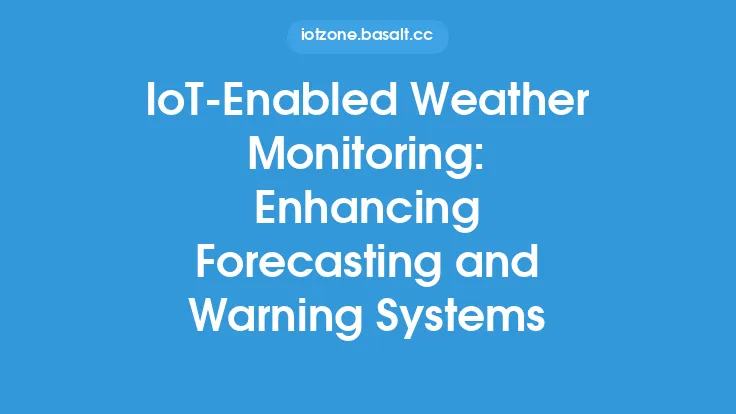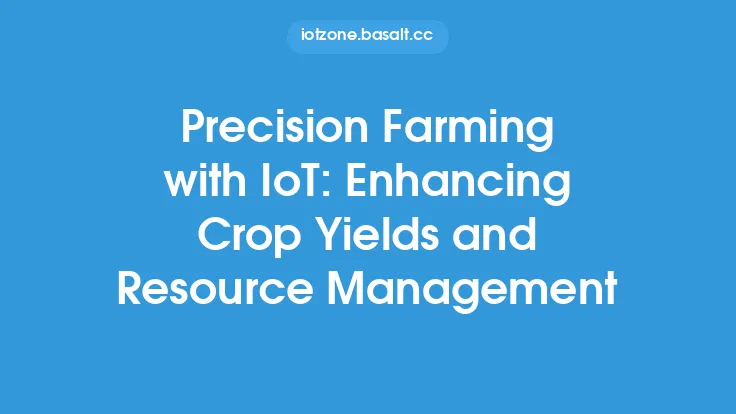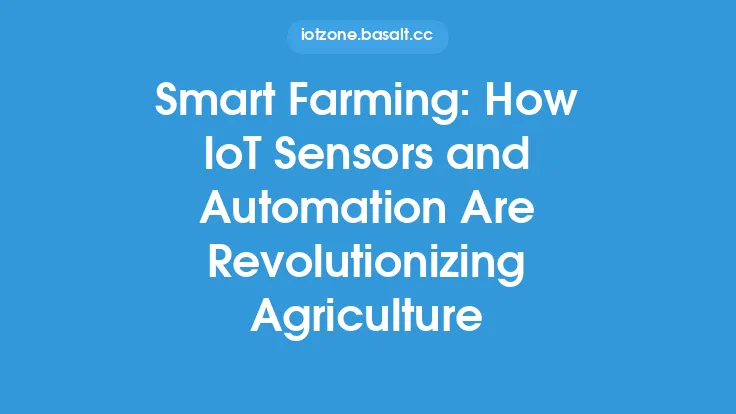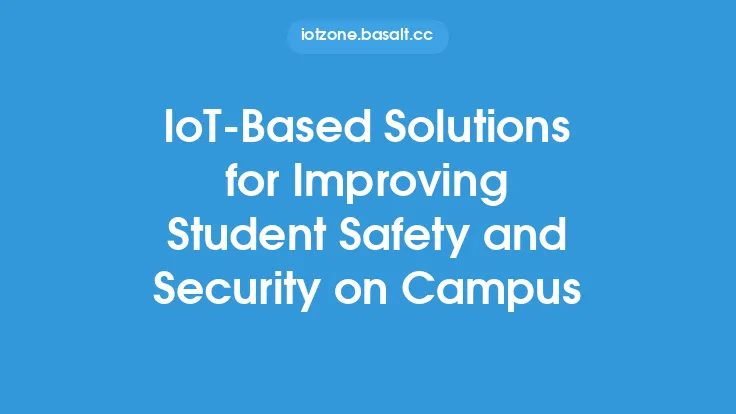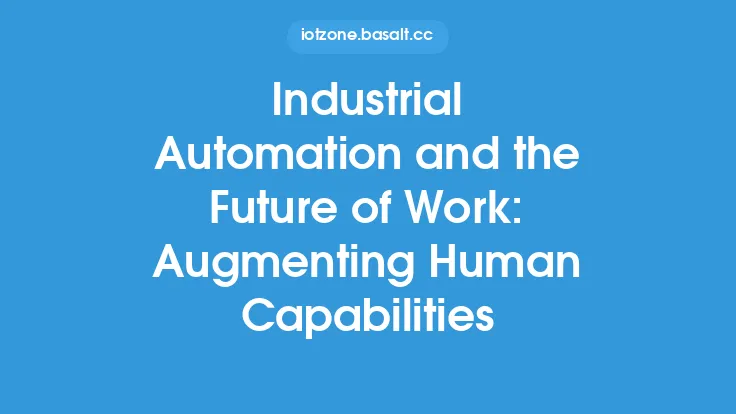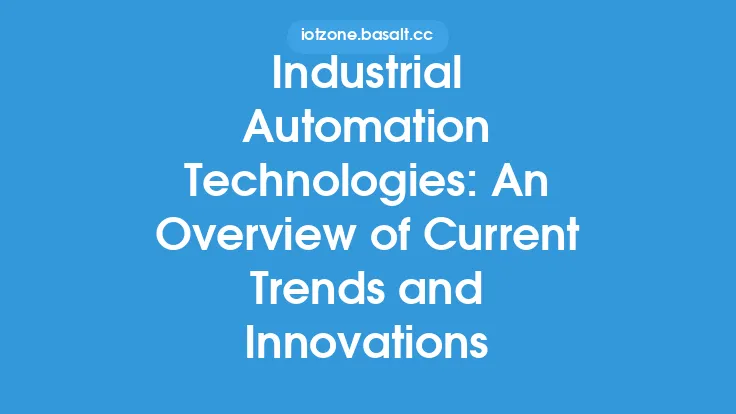The integration of Internet of Things (IoT) technology with robotics and drones is transforming the agricultural sector by automating various farm tasks, increasing efficiency, and reducing labor costs. IoT-enabled robotics and drones are equipped with sensors, GPS, and other technologies that enable them to collect data, navigate, and perform tasks with precision. This technology has the potential to revolutionize the way farmers manage their farms, from planting and harvesting to monitoring and maintaining crops.
Introduction to IoT-Enabled Robotics in Agriculture
IoT-enabled robotics in agriculture refers to the use of autonomous robots that are connected to the internet and can communicate with other devices and systems. These robots are equipped with sensors, cameras, and other technologies that enable them to collect data on soil moisture, temperature, and crop health. They can also be programmed to perform tasks such as planting, pruning, and harvesting. IoT-enabled robotics can be used in various agricultural applications, including crop monitoring, soil preparation, and livestock management.
Role of Drones in Farm Automation
Drones, also known as unmanned aerial vehicles (UAVs), are playing a significant role in farm automation. Equipped with cameras, sensors, and GPS, drones can collect data on crop health, soil moisture, and weather conditions. They can also be used to spray pesticides, fertilizers, and water crops. Drones are particularly useful in monitoring large areas of land, detecting crop diseases, and predicting yields. They can also be used to inspect farm equipment and infrastructure, reducing the need for manual inspections.
Technical Requirements for IoT-Enabled Robotics and Drones
The technical requirements for IoT-enabled robotics and drones in agriculture include a reliable internet connection, sensors, GPS, and software platforms. The robots and drones must be able to communicate with other devices and systems, such as weather stations, soil sensors, and farm management software. They must also be equipped with navigation systems, such as GPS and inertial measurement units (IMUs), to enable them to move around the farm and perform tasks with precision.
Communication Protocols and Data Analytics
Communication protocols, such as Wi-Fi, Bluetooth, and cellular networks, are used to connect IoT-enabled robots and drones to the internet and other devices. Data analytics platforms are used to process the data collected by the robots and drones, providing insights on crop health, soil moisture, and weather conditions. The data can be used to make informed decisions on farming practices, such as irrigation, fertilization, and pest control.
Security and Privacy Concerns
The use of IoT-enabled robotics and drones in agriculture raises security and privacy concerns. The devices must be secured against cyber threats, such as hacking and data breaches. The data collected by the devices must also be protected against unauthorized access. Farmers must ensure that they comply with data protection regulations, such as the General Data Protection Regulation (GDPR) in the European Union.
Benefits of Automating Farm Tasks with IoT-Enabled Robotics and Drones
The benefits of automating farm tasks with IoT-enabled robotics and drones include increased efficiency, reduced labor costs, and improved crop yields. The technology can also help farmers to reduce their environmental impact, such as by optimizing water and fertilizer usage. Additionally, IoT-enabled robotics and drones can help farmers to monitor and respond to crop diseases and pests, reducing the need for chemical pesticides and fertilizers.
Challenges and Limitations
Despite the benefits of IoT-enabled robotics and drones in agriculture, there are several challenges and limitations to their adoption. The technology is still relatively expensive, and many farmers may not have the resources to invest in it. There are also technical challenges, such as ensuring reliable internet connectivity and integrating the technology with existing farm management systems. Additionally, there may be regulatory challenges, such as ensuring compliance with data protection and privacy regulations.
Future Developments and Trends
The future of IoT-enabled robotics and drones in agriculture is promising, with several developments and trends on the horizon. One trend is the increasing use of artificial intelligence (AI) and machine learning (ML) in agricultural robotics and drones. AI and ML can be used to analyze data collected by the devices, providing insights on crop health and soil moisture. Another trend is the development of autonomous farming systems, which can automate entire farming processes, from planting to harvesting.
Conclusion
In conclusion, IoT-enabled robotics and drones are transforming the agricultural sector by automating various farm tasks, increasing efficiency, and reducing labor costs. While there are several benefits to this technology, there are also challenges and limitations to its adoption. As the technology continues to evolve, we can expect to see increased use of AI and ML, as well as the development of autonomous farming systems. By leveraging IoT-enabled robotics and drones, farmers can improve crop yields, reduce their environmental impact, and increase their profitability.
